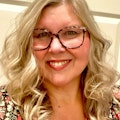Navigating the Future of Directed Energy Deposition (DED) and Laser Powder Bed Fusion (LPBF) Simulations
When it comes to additive manufacturing, advanced simulation techniques have become essential, particularly for processes like laser powder bed fusion (LPBF) and directed energy deposition (DED). In this second of a three-part series with Pan Optimization’s co-founder and Chief Engineer Erik Denlinger, Ph.D., and Tyler Nelson, principal engineer, we learn that each of these methods presents unique challenges and considerations for accurate representation and predictive modeling.
LPBF involves spreading a layer of metallic powder and using a laser to fuse it, layer by layer. In contrast, DED utilizes a robotic arm to deposit material, allowing for more complex geometries and larger components. Simulating DED effectively requires models that account for the directionality of deposition, Denlinger said. Unlike LPBF, where oscillation in the scanning pattern helps homogenize mechanical responses, DED processes—akin to welding simulations—necessitate an understanding of stress concentrations along the deposition path.
The innovation in DED simulation comes from recent developments in part scale modeling. Traditional DED methods often relied on moving source models, which are computationally intensive and problematic due to convergence issues. However, new part-scale DED models enable rapid thermos-mechanical predictions over large components—potentially several meters long—by integrating actual G-code with a mesh generation system. This approach not only enhances scalability but also eliminates many of the challenges linked to conventional techniques, Denlinger said.
Material versatility is another cornerstone of the simulation technology. The software supports an array of materials, reflecting those commonly used in modern additive manufacturing processes, Nelson said. Calibration is streamlined to require basic material properties, focusing on thermal modeling and allowing for quick identification of strain characteristics without complex processes. This adaptability meets the growing demand for larger and more intricate geometries and additive manufacturing, he said.
Watch additional parts of this interview series with Erik Denlinger and Tyler Nelson:
Part 1: Panning for Optimized Additive Manufacturing
Part 3: The Right Tool for the Job: Cloud vs. Local Solutions
About the Author
Sharon Spielman
Technical Editor, Machine Design
As Machine Design’s technical editor, Sharon Spielman produces content for the brand’s focus audience—design and multidisciplinary engineers. Her beat includes 3D printing/CAD; mechanical and motion systems, with an emphasis on pneumatics and linear motion; automation; robotics; and CNC machining.
Spielman has more than three decades of experience as a writer and editor for a range of B2B brands, including those that cover machine design; electrical design and manufacturing; interconnection technology; food and beverage manufacturing; process heating and cooling; finishing; and package converting.
Email: [email protected]
LinkedIn: @sharonspielman
Facebook: Machine Design
YouTube: @MachineDesign-EBM
